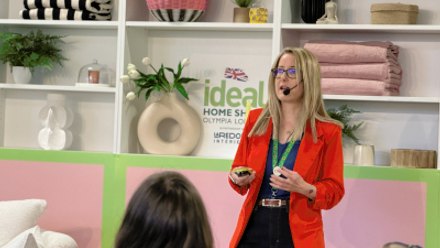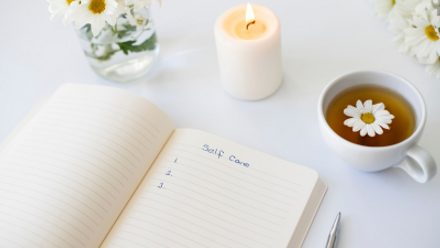Creating a neurodivergent-friendly home
Simple Ways to Celebrate Differences and Embrace Neurodiversity with Love and Intention
5 minute read
April is Autism Acceptance Month, and this year’s theme—“Celebrate Differences”—feels like a beautiful invitation to lean into compassion, understanding and intentional support.
APDO member Julie Stevens, like many APDO members, witnesses first-hand the incredible gifts that can come from neurodivergent minds—whether that’s Autism Spectrum Disorder (ASD), Attention Deficit Hyperactivity Disorder (ADHD), Auditory Processing Disorder (APD), or other unique ways of experiencing the world.
Celebrating differences isn’t just about awareness. It’s about acceptance—about honouring the way someone is wired and learning how we can better support them to thrive, especially in the spaces that matter most.
And for many neurodivergent individuals, home is where that journey of acceptance begins.
Creating Safe, Calm Spaces
Home should be a refuge—a place to exhale, recharge and be seen without judgment. For those who process the world differently, the environment at home can deeply impact how supported and empowered they feel.

Here are some ways to create a nurturing, neurodivergent-friendly home:
- Predictability Brings Peace: Many neurodivergent individuals find comfort in routines. Visual schedules, meal plans or even a weekly rhythm on the fridge can bring a sense of calm and control.
- Think Sensory-Friendly: Lighting, noise, textures, smells—they all play a part. Small changes like noise-cancelling headphones, dimmable lights, fidget tools or a quiet nook can make a big difference.
- Use Colour with Intention: Colour can powerfully influence mood. Soothing tones like blue or green often bring calm, while warm earthy colours can ground and comfort. (As an interior designer, I’ve seen first-hand how colour can shift the energy of a space—and a person.)
- Be Curious, Not Controlling: Ask open-ended questions to family members and friends to find out more about them, and to discover how you can support them when they are in your home, away from their own environments. “What helps you feel calm?” or “What’s hard about mornings for you?” These gentle conversations create emotional safety and build trust.
Supporting Daily Routines & Emotional Wellbeing
Productivity at home doesn’t have to look like ticking boxes or constant motion. For neurodivergent individuals—especially children or teens—it’s often about feeling capable, supported and free to be themselves. With a sense of peace prevailing in the home there will be greater productivity.
Here are a few ways to offer support that builds confidence and peace:
- Break Tasks into Steps: Getting dressed, tidying a room or preparing for an event can feel overwhelming. Checklists, timers or “first-then” prompts can bring clarity and structure.
- Celebrate Effort, Not Just Outcomes: Notice the small wins. “You stayed focused for 15 minutes—amazing!” This builds resilience and motivation.
- Permission to Rest: Many neurodivergent individuals need more downtime to regulate their nervous systems. Rest isn’t laziness—it’s wise energy management. Who doesn’t love the permission that statement brings? It’s wise energy management.
- Use Visual Tools: Chore charts, coloured calendars, sticky notes—these aren’t childish: they’re tools of empowerment. When someone can see what’s needed, they often feel more in control.
- Model Emotional Regulation: You don’t have to get it perfect. But when we model calm, repair after frustration and offer grace, we create a space where emotional safety grows.
Supporting Productivity with Simple Routines: A Morning Checklist

Supporting productivity doesn’t mean pushing for perfection—it means helping someone feel capable, confident and in control of their day. For neurodivergent individuals, especially teens or young adults, mornings can often feel overwhelming. A clear, repeatable checklist can be a game-changer.
Here’s an example of a Morning Routine for Getting Ready for Work or School (note that the morning routine actually starts the night before).
The Night Before:
- Set an alarm (with a resonant calming or motivating tone)
- Check if it’s a hair wash day—if so, set the alarm 10 minutes earlier
- Lay out clothes for the next day
- Pack bag with essentials (ID, headphones, lunch, water bottle)
- Review the next day’s schedule, with someone else, if that’s helpful.
Morning Routine:
- Wake up (to your preferred alarm tone)
- Bathroom, clean teeth, stretch and shower and dry
- Apply anti-perspirant and any other skin products like moisturisers, perfume or cologne
- Get dressed into the clothes you laid out the night before
- Prepare and eat a protein-rich breakfast such as eggs on toast, or a smoothie with oats and nut butter
- Take any medications or supplements (use a visual or verbal prompt if needed)
- Final bag check and grab lunch from the fridge
- Review the day’s plan whilst reciting your chosen personal affirmations to build your positive mindset
- Head out or log in for the day
🧡 Other tools/tips that may help you to keep focused**:**
- Use a timer or visual clock to stay on track without a panic or rushing
- Have a “morning motivation” playlist or podcast playing whilst getting ready
- Build in a “reset moment” if things go off-track—deep breaths, a few stretches, or quiet time with a comforting object or thought
This kind of structure isn’t about being rigid—it’s about giving someone a clear runway to take off from. It reduces decision fatigue, builds independence and helps the day begin from a place of calm confidence. After a while this routine will not need a checklist. However, if there is a moment of crisis or upset, it will always be there for support.
Every Soul Needs a Safe Haven

At the heart of it, supporting neurodivergent individuals at home is less about “fixing” and more about framing—seeing difference not as something to change, but as something to champion.
It’s choosing to say: “I see you. I honour how you're wired. And I want to create a space where you can shine.”
There’s a verse in the Bible I love in Psalm 139:14 “I praise you because I am fearfully and wonderfully made.”
That truth applies to every person, in every neurotype, in every home. When we build spaces of acceptance, we water the soil for someone’s purpose to grow.
One Small Step
As you consider all you have read, ask yourself:

What’s one small change I can make this week to help someone in my home feel safer, calmer, or more supported?
Maybe it’s simplifying routines.
Maybe it’s asking a new question.
Maybe it’s adjusting expectations.
Start small. Start with love.
The difference you make at home may be bigger than you think.






